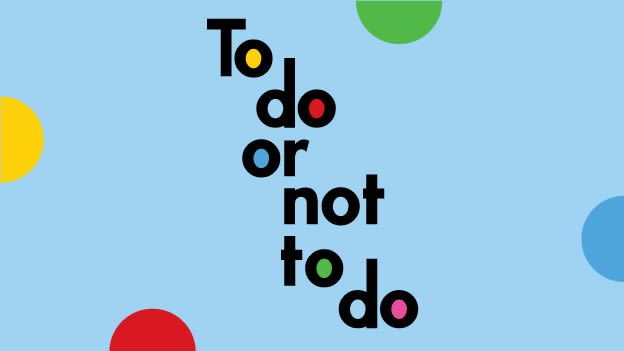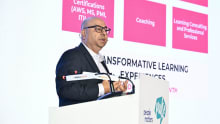To do or not to do

Organizational values will lead us to business value and HR has to ensure that this message percolates deep into the company
External leaders can play an effective role when the organization is looking to disrupt the existing setting
Like Shakespeare’s Hamlet weighed the moral ramifications of living and dying through his question ‘To be, or not to be…,’ HR professionals are in a constant state of quandary wherein we must evaluate and choose from the contrasting alternatives, which the workplace relentlessly throws at us.
The ever-changing business and workplace scenario ushers us into 2015 – the year of dilemmas. The predicaments, which we have been encountering all the time, will resurface with a greater force now than ever and if not addressed proactively may throw our plans out of gear. The Strategist and People Matters list out 15 such dilemmas, which we will need to address this year.
1. Business Value or Organizational Values?
Do strong organizational values result into business value? Or does a strong balance sheet with sufficient funds enable enough resources for investing into building organizational culture (values)? Another dilemma with similar spirit – Do ends justify the means and what kind of culture tone does that set in the organization?
This dilemma continues to exist across various stages and areas in the organization but the universal truth is simple—Are we looking at short-term hype or are we interested in creating an institution of tomorrow? If we are building an institution of tomorrow, then the answer is that organizational values will lead us to business value and HR has to ensure that this message percolates deep into the organization. Examples in the form of artefacts and structural interventions need to be set across to propagate the same.
2. Mind or Heart?
We encounter the heart versus mind dilemma in every sphere of our lives and HR is not untouched from it either. In fact, HR faces it more than other functions. Mind or the Yang, which is the logical/rational part, is extremely business driven and is focused on ROI and numbers. Heart or Yin represents the softer aspects – it is emotional and extremely people driven. The challenge for HR is to decide, which aspect should dominate the strategic (or even the everyday) decision-making.
The answer lies in trying to achieve the fine balance between Yin and Yang – Heart and Mind. The new age HR needs to “Think by Heart and Feel by Mind”. A perfect blend of Yin and Yang wherein when we crush numbers by mind we don’t ignore or neglect the softer side of it and when we are managing emotions we retain some degree of rationality.
3. Build Leaders or Acquire Leaders?
This is one debate that is becoming more heated with each passing day not only because the pressure to perform at the top every quarter is increasing but also because of the creation of new positions as the business grows.
Home-grown leaders command more respect from employees, are in touch with the company’s reality both in terms of business model or culture and hence are more practical. On the other hand, acquiring external leaders helps bring a fresh ‘outsider’ perspective to the table, which is often missed or ignored by home-grown leaders.
External leaders can play an effective role when the organization is looking to disrupt the existing setting of the organization. If the intent is to continue with what’s prevailing, then home-grown leaders are the perfect fit.
4. Hi Tech or Hi Touch?
The dilemma of ‘How much to automate?’ cuts through the entire employee life cycle – starting from recruitment to training to even employee communication. For each of these areas (and several others), the question we face is how much and what all we should automate (Hi Tech).
The technological innovations have no doubt given us powerful tools which if used wisely makes the life of a HR professional easier and less stressful. They give us leverage in the workplace environment and reduce the time and expense. However, relying too much on them not only dilutes employee trust, but also creates an environment of materialistic transactions and takes away the charm of human touch, the bedrock of a relationship.
The key is not to be obsessed with technology and not to automate every aspect of HR function. A fine balance has to be drawn and one of the founding principles for the same is to automate only those components, which are transactional in nature where human intervention can’t add any value like updating leave records. But avoid things like automating birthday wishes through eCards as physical cards or phone calls or personal wishes can add more value to the interaction.
5. Meritocracy or Inclusivity?
As organizations adopt a more comprehensive global view, they are becoming increasingly serious about diversity and inclusion. The efforts are evident in how the offices are being designed, how policies are being modified and how recruitment is being done. In this zeal of inclusivity and sustaining the culture of meritocracy, organizations are creating an environment wherein all the groups are chasing the same set of targets with differential abilities and resources thereby causing tensions. Many of us believe creating differentials targets is a dilution of culture of meritocracy.
We, however, are missing the point that inclusion doesn’t mean giving the same work to everyone and expecting the same outcomes regardless of a person’s ability. The section of workforce that has special needs – specially-abled, new mothers, employees on flex-time etc. will surely lose if equated with ‘regular’ employees.
Foremost, job roles should be worked out for employees with special needs. Their goals have to be tailored and performances should be reviewed accordingly. A culture that promotes respect among diverse work groups has to be created to avoid tension. Organizations are no doubt in the ‘meritocracy’ business and want results but defining what ‘merit’ means for diverse groups will take them a long way.
6. Organization Policies to cater to Gen X or Gen Y?
Few of us tend to dismiss these terms as mere labels but on a closer look we’ll discover that if one is from Mars, the other is from Venus. Two distinct but coexisting generations, which make up today’s workplace, have different drives as they are at different stages in their lives. Gen Xers are those born between early 1960s and early 1980s. They are currently working towards accumulating wealth and are occupied with taking care of their children and parents. Gen Yers or Millennials – those born after Gen Xers and till about 2000 – is the ‘instant’ generation with a need for instant gratification - a generation of abundance, which is completely driven by technology.
HR & organization should appreciate and accept that these are two different set of employees and a single policy outlook will not help anymore - after all ‘one-size-doesn’t-fit-all.’ Their expectation of work, motivation at work, career goal, expectation from manager, work environment, learning needs – everything differs. Their differences are real and here to stay. We need to acknowledge those and build our practices around them. What will work is ‘differential outlook for differential generations.’
7. Interviews or Conversations?
Interviewing is often one of the most dull and uninspiring process. Not so surprisingly, most of the candidates don’t like it either–rather few even dread it. Currently, an interview is a process where a candidate’s skillset is assessed through a list of questions. But can it be an opportunity to do more than that? Are we hiring just another resource or keen on creating a brand ambassador?
What needs to be realized is that interviews and conversations need not be mutually exclusive. A good interview actually makes both parties communicate equally and hence involves conversation. This engages and interests both and can provide great insight to them. ‘Conversational Interviewing’ or ‘Flexible Interviewing’ as it is often referred to takes the best of both worlds and combines mandatory/fixed questions with non-scripted elements of feedback and follow-up questions.
8. Engaging All or Investing in High Potentials?
Engagement is one of the top agenda items as enough researchers have proved that engaged employees outperform those who are not. The battlefield question, however, is whether to focus on engaging the entire workforce or concentrate efforts on a select few- those who are high performers and have delivered consistently. Engagement programs utilize a lot of company resources and organizations wonder whether trying to engage someone who has ‘checked out’ mentally is a lost cause.
Engaging, or at least making an effort to engage all employees, is a great way to make employees feel that they are valued, which would result in moving some fence sitters to the engaged lot. It pays to concentrate on the bigger picture and to think of employee engagement as a holistic practice and part of organization’s fabric. Simultaneously, a parallel culture of valuing high potentials with transparency in the system is not a bad move either.
9. Individual Heroes or Team Champions?
Organizations achieve the unbelievable because of few individual heroes who are game changers whereas they survive the daily ordeals because of the untiring teams that work and weave the magic. At the end of the year, who gets the cheers is the dilemma that organizations struggle with.
It is vital to celebrate all kind of successes, albeit, team victory or individual heroes as acknowledging a job well done is more critical than anything else. What is also important is to ensure that the under performers don’t get shielded by this and mustn’t get a breather to survive few more quarters / years. Also, a culture of differentiation in terms of the nature of awards can be designed to distinguish based on the criticality of the success to the organization priority.
10. Retiring or Rehiring Boomers?
Boomer-ang! – Well the boomers are back and that too with a bang. If we talk to them, we’ll know that some were never gone. Retiring them does create space for the younger generation to move up and brings in fresher and diverse perspectives to the table, but what one loses is decades of valuable insights and experience. Rehiring them can bring that experience and know-how back and moreover doing so saves on the cost of hiring and training a new employee.
Retiring employees at a particular age because of a policy or checklist may not be a great idea if the employee is fit both physically and emotionally and can contribute to the growth of the organization. Phasing the retirement of existing employees or rehiring baby boomers as part-time employees or consultants is an option that should be explored. Boomers are excellent Subject Matter Experts and losing them abruptly to retirement can be an irreversible damage.
11. Classroom cases or Games?
The good old classroom training format with case studies is the most trusted and favoured by any organization’s L&D function. It is simple, straight-forward and often considered quite effective as well. However, with the younger generation entering the workforce, increasing virtual and geographically distributed teams and most significantly lack of time to attend classroom sessions, new possibilities have to be explored.
Who doesn’t mind a good game! Organizations can explore games as a mechanism for induction, specialized skill development, competency awareness etc. wherein the content and delivery is standardized to a great deal. Games as a mechanism to teach complex topics like decision making through scenario making can be explored too. Classroom teaching cannot be or rather shouldn’t be replaced but gaming as a technique should surely be integrated in it.
12. Sticking to the Rule Book or Showing Compassion?
In the current economic scenario, dynamic circumstances often land people champions in situations that are neither not foreseen nor forecasted. This makes the rule book often redundant. So does one deviate from the rule book and show compassion as a fellow human or does one stick to the rule book?
One of the expectations from the stakeholders for HR is that the function will be fair and transparent at all times. To do so, it is important that HR respects distributive justice and procedural justice, which means that not only should the outcome be fair and equal but the process adopted to arrive there should be fair as well. Any deviation / exception often compromises this and thus should be avoided. If the rule book itself becomes obsolete, then perhaps it is time to write a new one.
13. Carpet Bombing Induction or On-the-job Assimilation?
First impression is the last impression–this applies to both employees as well as employers. Employee induction is a great way for the employee to integrate and socialize in the organization and to set the foundation of a successful, productive and long-term working relationship. However, carpet bombing induction looks at dumping all the required information on employees in the initial few days. On-the-job induction is a slow and methodical process of assimilation of employee with the organization.
Carpet Bombing expects / assumes that the employee is inherently intelligent enough to appreciate and understand all the information instantaneously, which unfortunately is not possible in all the cases. Carpet bombing also doesn’t give space to the employee to integrate with the organization culture. A good way is to space out the induction process without creating too much of administrative load for team HR.
14. Broad-based or High Visibility Leadership?
Do we need a single (or a few) charismatic leader or should leadership be fostered throughout the company? The traditional leadership models were rooted in military where a single person commanded many people. But, in the current workplace dynamics, the old models and definitions have become irrelevant. Earlier, leadership was all about telling people what to do, hand holding them and solving problems. Now, it is about empowering them, guiding them and tapping their talent.
Now everyone is a leader. An organization can be successful only if it can capitalize on each employee’s talent. While hiring, organizations are keen to take individuals who are not only self-motivated, but those who can mobilize others as well– in short, they should have the DNA of a leader. So it is best if leadership is not reserved as a territory of only the most captivating personality. Creating leaders right from the CEO to the housekeeping staff is the key to building a successful new age organization – if may not have glitz and glamour but it definitely works better!
15. Reskilling Talent or Hire & Fire?
The ever-changing skillset to carry out a role is a major challenge for businesses today. Adding on to the woes is the widening skills gap between what they have and what they need.
A current employee might possess soon-to-be-obsolete skills, but he is well aware of the organizational goals, is in touch with the company’s reality, and moreover can be a great ambassador for the company when the company invests in him. ‘Skill Family Tree’ is an essential component for reskilling. Reskilling existing employees in the family tree is much more cost effective (as skills belong to the same genre) than hiring new ones as it saves on the recruitment, orientation, as well as training costs.
Nothing is black and white in this world of dilemmas; everything is different shades of grey. When we face them, let us pause and ponder – Is having a dilemma really such a bad thing after all? The key is not to rush into choosing one. Our ability lies in appreciating them and realizing that the solution is not ‘either-or’ but AND.
We must select in such a way that there is a fine balance. We need to unite diverse approaches and get the best of both worlds. So let us hope that 2015 – the International Year of Light – will throw light on the both brighter sides of the dilemma and will enable us to traverse the journey of AND rather than either or, that is, Co-Create rather than just Collaborate.











